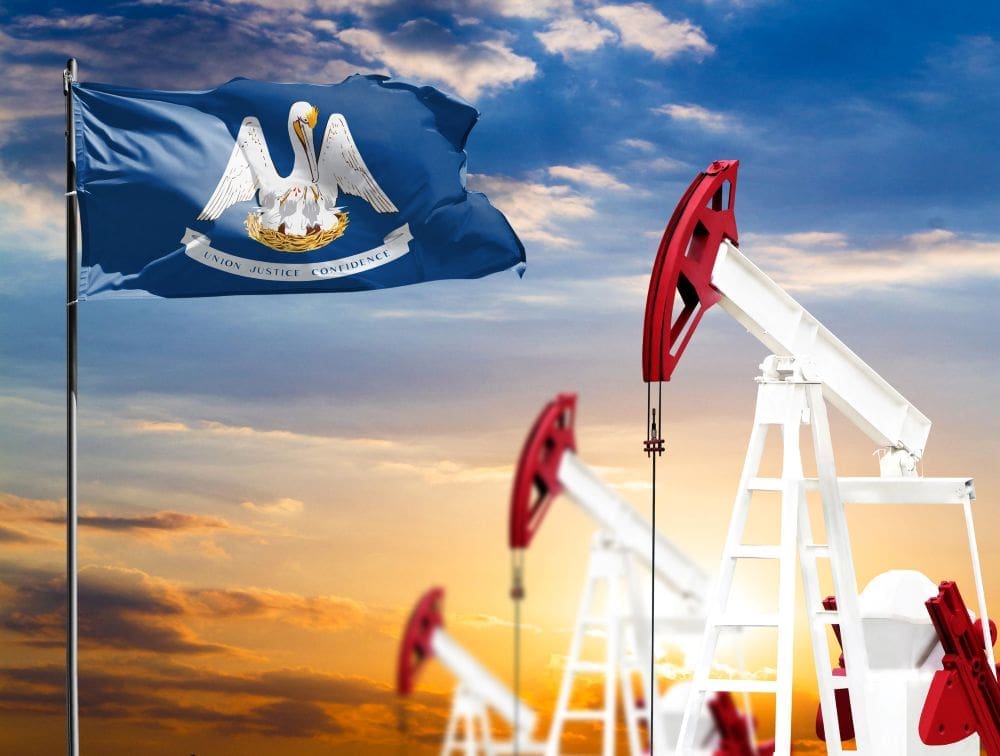After years of failed attempts, the state of Louisiana recently achieved a feat: It passed a bill that has important repercussions for oil producers everywhere. Governor Jeff Landry signed it into law, pulling through on a promise to make the state competitive.
The new legislation slices the state’s exceptionally high severance tax rate almost in half, from 12.5 percent down to 6.5 percent for new wells. For businesses, this could mean a savings of tens of millions of dollars in the coming years.
It’s a change I advocated for. Because my work focuses on helping companies handle the complicated mess of oil and gas severance taxes, I have long seen how Louisiana’s rates were keeping business away. Many other states have rates in the low single digits.
The Bayou State has hundreds of millions of proven, untapped reserves. A recent report from the U.S. Geological Survey also estimated that there are 28 million “undiscovered, technically recoverable” barrels of oil within the Lower Cretaceous Hosston and Travis Peak Formations of the Gulf Coast, which includes Louisiana.
What Oil and Gas Producers Should Know
The law, HB600, applies to new wells. Existing wells will still be taxed at the old, higher rate of 12.5 percent. But most of the work has already been done at those sites. Incapable wells and stripper wells are taxed at lower rates, as are inactive or orphaned wells that are brought back into production.
Meanwhile, to make this lower rate work for oil, the state changed another provision. That’s because the state’s constitution requires a balanced budget. Any change needs to be offset in some way, so that projections indicate the state won’t go into the red. (To be clear, projections don’t always pull through. The state has debt.)
The new law was written in hopes of collecting more revenue from horizontal wells. As Energies Media has explained, these involve “drilling parallel to the reservoir, maximizing contact with the hydrocarbon-bearing formation.” Louisiana previously exempted horizontal wells from severance taxes for the first 24 months. Under the new law, that time period is reduced to 18 months. The hope for the state is that this change will help make up for any losses from the lower oil severance tax rates, without dissuading producers from pursuing the opportunities of horizontal drilling.
Ultimately, however, there’s a different change Louisiana should make in order to increase revenues from gas severance taxes. There, the problem isn’t the rate, but the system the state is following.
Most states charge severance taxes based on the value of the natural gas at the time it’s collected; Louisiana charges based on volume. A rate is set each year, and a company pays that amount per mcf (1,000 cubic feet) no matter what’s happening in the markets. As a result, the state loses out on potential revenue at times when natural gas prices are high.
Reinvigorating the Industry
Severance taxes play an important role in every state (including Texas, where I live). They’re used for emergency funds, road projects, schools and other necessities. But Louisiana’s gamble should pay off. If more companies start drilling, just as much money – or even more – could come in at the lower rate.
For years, I’ve heard from clients that they’ve been avoiding Louisiana specifically because of the sky-high severance taxes on oil. That helps explain why revenues plummeted. “Forty years ago, the oil and gas severance tax represented 40 percent of our annual revenue. Today it represents less than five percent,” Landry said last November.
This new move, coming into alignment with most of the country, sends a signal to the industry. “I want this energy industry to go back to the days when it was thriving, when there were high wages, and excitement to be a part of it,” Landry said when signing HB600.
As companies look to launch new projects, they now have good reason to put Louisiana on the table. Businesses that move most quickly to break ground will be best positioned to profit, provide jobs, and help satisfy America’s high levels of energy demand. In short, as I see it, an energy-rich oil state has just opened for business.
Sarah Magruder is founder and CEO of Savvy Oil & Gas Consulting.







